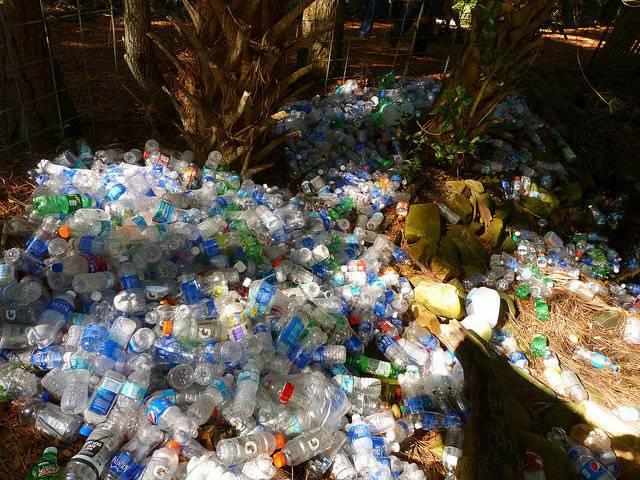
By Erin Simon
The holidays are here and with them comes a scene we know all too well. Picture it – you’re filled with spirit as you sift through the back of a closet to unpack old decoration and adorn your house. You grab a strand of lights, ready to make your front windows glimmer, plug them in, and nothing happens. What’s the problem? One single light in the strand is broken, and now the whole thing has failed.
This is the flaw in our global materials management system.
When we harvest natural resources and turn them into our everyday products, we put pressure on our environment. When we use these products and materials only once before throwing them away, we waste our natural resources. We could reuse far more of what we extract from the Earth, but there needs to be a market, verification measures, and willingness from all actors – from the companies that manufacture the products to local governments who manage waste systems – in order to do so. Like a string of lights, every part needs to work together for the entire system to succeed, but we don’t yet have every component of the value chain on board.
Take one recent example in the United States – a hospital invested in a system to collect clean, high-quality plastic from their operations. These plastics were uncontaminated materials with high value and potential to be used again in a new product. The hospital wanted to get these materials to buyers who could reuse them, but had no means of doing so without a service in place to help. Even in the United States, with a strong infrastructure system around material recovery, our materials management system isn’t living up to its potential.
The issue around our materials management is urgent, and the time to act is now. We are losing forests and grasslands as we collect materials, we are contaminating our oceans as we toss away unnecessarily wasted items, and we are polluting our air as we exert more energy and expel carbon emissions pulling additional resources from the Earth instead of recovering materials that could have been used again.
It doesn’t have to be this way. If we join together industry, NGOs and local governments, we can create a collaborative system that extends the life of our natural resources. But we all must work together. We need to leverage all our strengths to have a meaningful impact.
Creating cascading value in materials so they can be reinvented and reused is not a simple process. It all needs to start by getting the materials back from those who used them in the first place – for that you need a collection program in place to which people have easy access. Materials then have to be aggregated and processed into useful components. Once the materials have been repurposed there needs to be someone willing to buy it and use it in a new product. All along this chain the participants have to be able to find each other, talk to each other and consistently meet quality and safety standards.
A lot could go wrong along this process – the price of the materials might drop, and then one of the companies along the chain might not be able to operate. Or collection programs might not be communicated well to the public, so the quality of collected material suffers. That’s why it is critical to take a holistic view and involve a wide range of stakeholders. That is the goal of the Cascading Materials Vision.
The Cascading Materials Vision is a platform that seeks to enable broader collaboration on materials management, creating shared value through materials recovery. To do it, the Cascading Materials Vision has convened industry and other stakeholders that will help companies source repurposed materials that protect their profits, the environment and the future wealth of our natural resources.
It’s not just about recovering as many materials as we can; it’s about protecting ourselves and our planet. If we think differently, we can do more with less. And if we are committed to doing it together, we will keep our natural resources glowing brightly for future generations.
Erin Simon is the Director of Sustainability R&D at World Wildlife Fund.
TriplePundit has published articles from over 1000 contributors. If you'd like to be a guest author, please get in touch!














